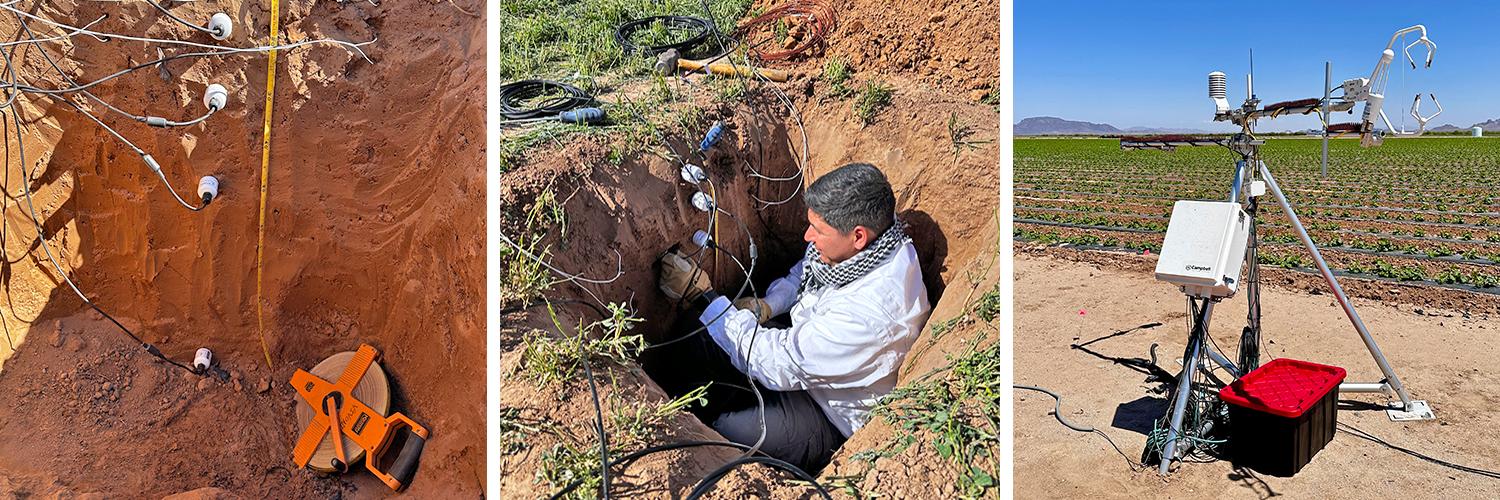
Measuring the water savings from innovative soil health solutions for Arizona farms
Water is the central constraint on agricultural productivity in arid areas like Arizona. With increasing uncertainty related to groundwater and Colorado River supplies, using water effectively is crucial for sustainable farming.
One of the key ways to conserve water in agricultural systems is to increase soil health. A new partnership is focused on a basic but pressing question: can improving soil health with algae-based amendments reduce the amount of water needed for irrigation? Initial results are positive.
The project is supported by the Water Infrastructure Financing Authority and includes researchers with ASU's Center for Hydrologic Innovations, a pillar of the Arizona Water Innovation Initiative that is directed by professor Enrique Vivoni, and the Swette Center for Sustainable Food Systems, collaborating with the soil technology company MyLand and farmers across the state.
Helping to lead the fieldwork for the project is Efrain Vizuete, an ASU researcher who has been traveling across the southern part of the state to install measurement and monitoring equipment on farms growing a variety of crops including alfalfa, melons and rosemary.
Originally from Colombia and raised in Ecuador, Vizuete studied environmental engineering in a region with around 10 times the annual rainfall of Arizona. But during his graduate work in the arid region of Sonora, Mexico, he directly saw the impacts of water scarcity and drought. Those experiences, combined with his technical skills in field instrumentation and fieldwork, made him an excellent fit for this project.
A potential soil-based solution
For the last several months, Vizuete and Alonso Haros, a field technician with the project, have been setting up monitoring stations on farms in places like Tonopah, Gila Bend and Yuma to collect environmental data to determine the effects of MyLand’s microalgae soil amendments on desert crops.
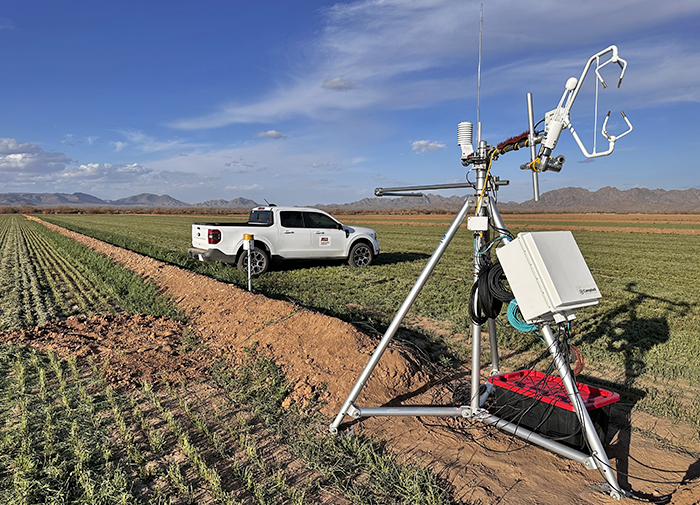
The project spans 2,400 acres of farmland across Arizona, with more sites to come in other key agricultural hubs. It’s built around MyLand’s core technology: delivering native microalgae back into the soil through existing irrigation systems.
These tiny organisms, collected and cultivated from each local ecosystem, are designed to improve soil structure, increase water retention and enhance nutrient availability while reducing salinity and potentially boosting crop yields. The company has reported promising results from its own internal studies, and believes independent validation is important.
“MyLand says the microalgae may help plants grow better with less water,” says Vizuete. “Our job is to measure whether that’s really happening.”
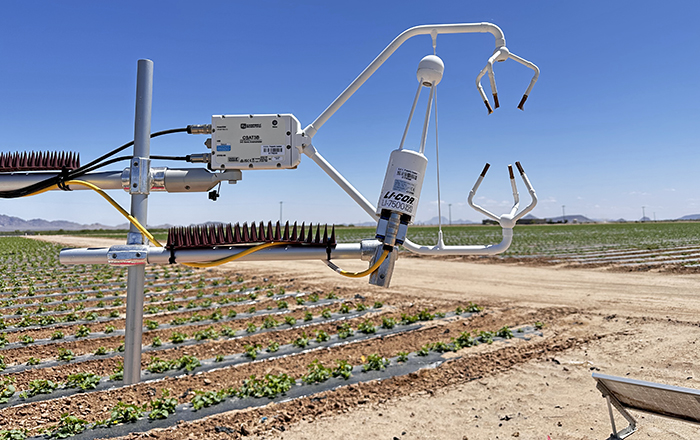
To do this, the team is deploying paired eddy covariance towers, specialized instruments that track the exchange of water vapor, heat and carbon dioxide between the crop field and the atmosphere above. One tower is in a plot treated with microalgae and one in a control plot using standard farming practices.
Each tower is a custom-built scientific station that monitors carbon fluxes, water vapor, soil temperature and other environmental data. It’s complex work, but essential to understanding what’s happening beneath the surface.
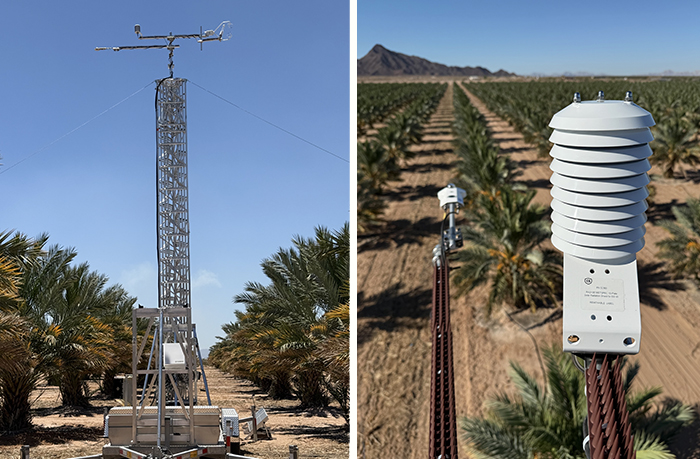
Vizuete’s field team typically consists of just two people – him and Haros – sometimes making the physical labor a challenge. It takes two days to install an eddy covariance tower, after a couple of days spent building one in the lab.
“These towers aren’t something you just buy and plug in,” Vizuete says. “We build them ourselves, assemble each component and install them in the field, sometimes digging more than a meter, or over three feet, deep to place the sensors.”
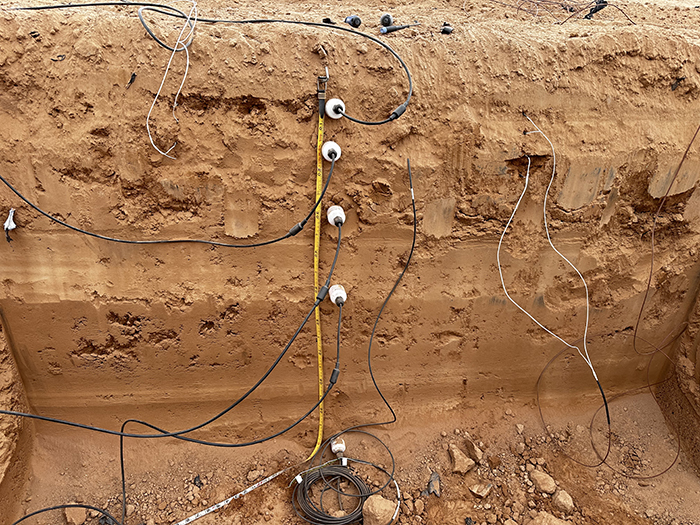
Once the data is collected, a data analysis team that includes Nidia Rojas-Robles and Rose Barzin process the data from the stations and use remote sensing data from the sites to track conditions.
Measuring more than yields
While crop yield is an important indicator, the researchers are looking at more subtle signals of crop water use. One key metric is evapotranspiration, or as Vizuete defines it, “the combined water loss from soil evaporation and plant transpiration.” If the microalgae treatments are effective, the researchers expect to see lower water loss in the treated plots.
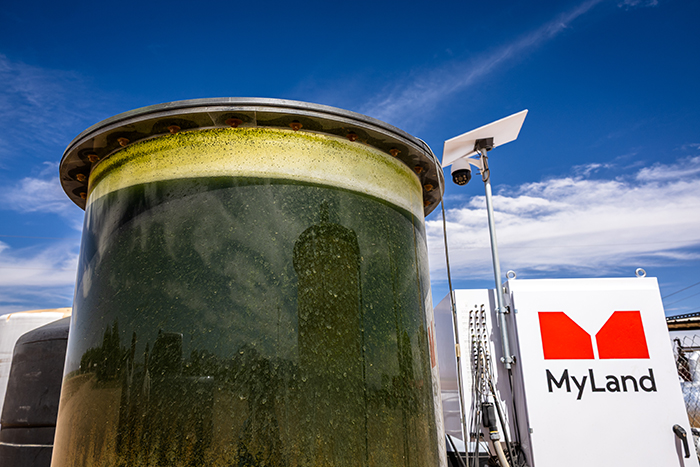
“Evapotranspiration tells us how much water is leaving the system,” Vizuete explains. “If the crops in the treated areas are using less water and still growing well, we’ll have some data about how well the soil amendments are working.”
The data will also help other researchers with meteorological measurements that are crucial but often lacking in Arizona and can help with modeling to support water managers, decision-makers and farmers make informed decisions about irrigation strategies and soil management across the state.
Looking forward
Though still in its early phases, the project has ambitious goals. If successful, it could help save up to 2,880 acre-feet of water per year, which is enough to supply thousands of households – an acre foot can supply around three households with water for a year.
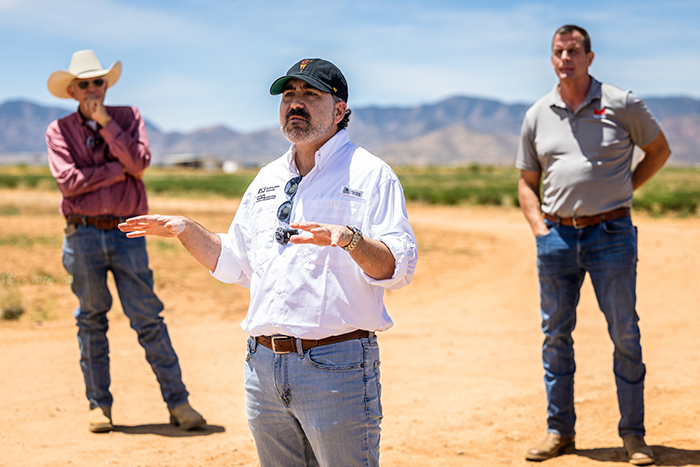
Early results are promising. At a recent field event hosted by southern Arizona chile farmer Ed Curry on his farm, he estimated that the MyLand algae amendment has helped him to reduce his water use by 10 percent. Other growers have documented a 15 percent water use savings in alfalfa and an increase of 24 percent water use efficiency for almonds.
The project also offers a model for how collaboration between universities, private companies and growers can create scalable, science-backed solutions. If the findings continue to show measurable water savings across locations and crops, it could influence how growers think about soil biology and conservation practices in Arizona and beyond.
Related stories: